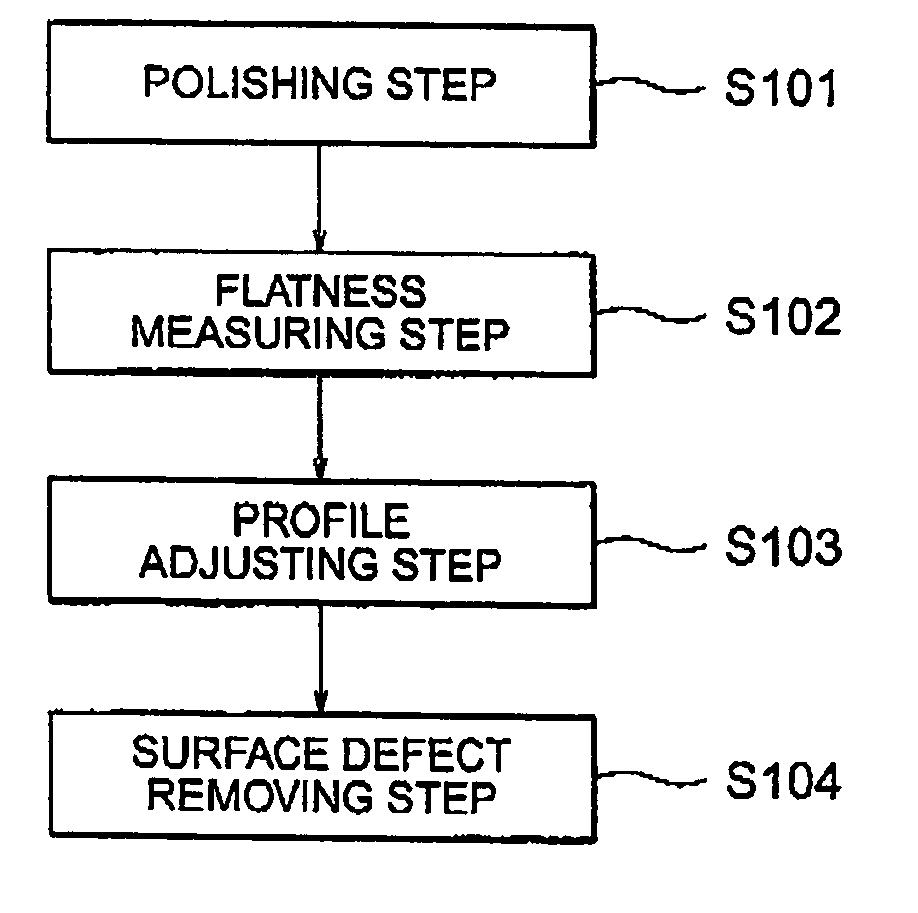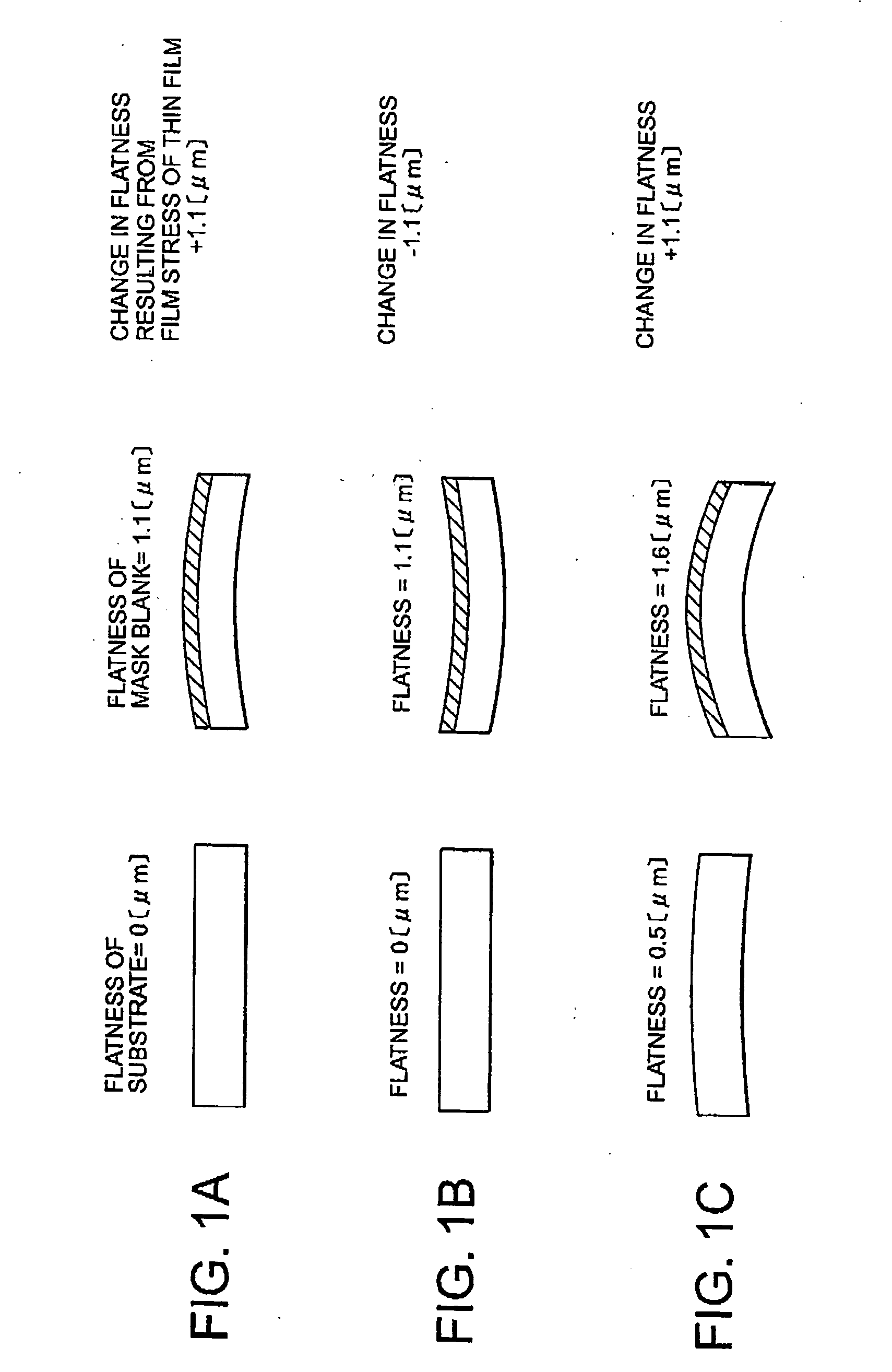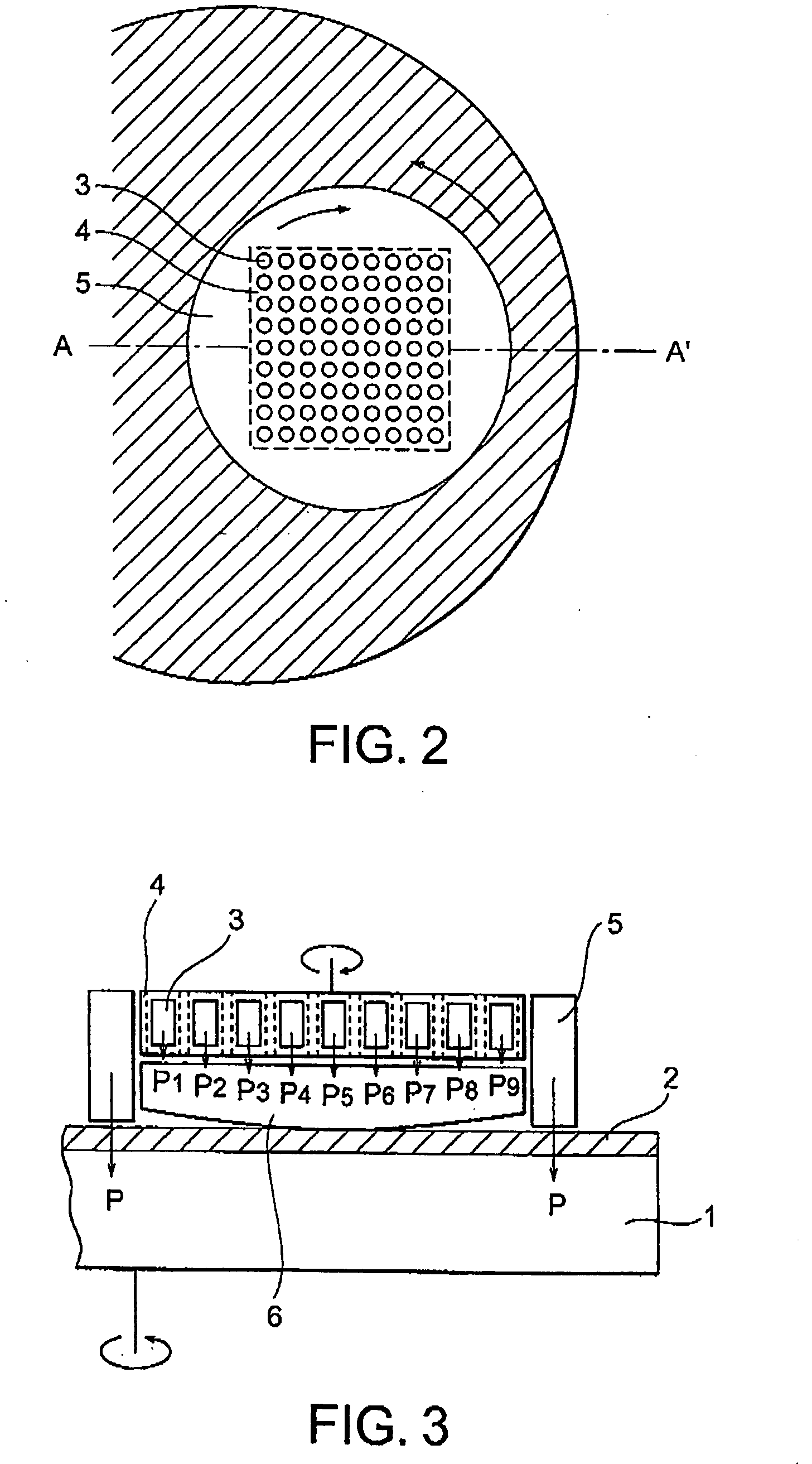Method of determining a flatness of an electronic device substrate, method of producing the substrate, method of producing a mask blank, method of producing a transfer mask, polishing method, electronic device substrate, mask blank, transfer mask, and polishing apparatus
a technology of electronic devices and substrates, which is applied in the direction of metal-working apparatus, metallic material coating process, and semiconductor/solid-state device testing/measurement. it can solve the problems of pattern displacement errors or pattern defects, deterioration of the total flatness of the photomask blank as a material of the photomask, and deterioration of the pattern position accuracy. achieve the desired flatness of the mask blank and the desired flatness of the transfer mask, and avoid deterioration of the pattern
- Summary
- Abstract
- Description
- Claims
- Application Information
AI Technical Summary
Benefits of technology
Problems solved by technology
Method used
Image
Examples
example 6
[0235] The flatness was adjusted in the manner similar to Example 3 except that the polishing solution in Example 3 was replaced by a polishing solution containing colloidal silica (average particle size of 100 nm) as an abrasive and sodium hydroxide added thereto so as to achieve a pH value of 11.2 and that mechanochemical polishing was used.
[0236] As a result, the substrate finally obtained had a substantially equivalent flatness. However, the polishing time required in adjustment of the flatness can be shortened by about 15-20%.
[0237] According to this invention, even in case where the thin film itself has a film stress, the photomask blank having a desired flatness can be obtained. It is therefore possible to provide a method of producing a photomask blank and a method of producing a photomask, which are capable of achieving a desired flatness of the photomask blank and which are capable of avoiding deterioration in pattern position accuracy of the photomask as well as occurre...
example 1
[0285] 1) Rough Polishing Step (S101)
[0286] Preparation was made of synthetic quartz glass substrates (6 inch×6 inch) after subjected to chamfering at its end faces and lapping by a double-sided lapping apparatus. The glass substrates, 12 in number, were set in the above-mentioned double-sided polishing apparatus and subjected to a rough polishing step in the following polishing condition. A working load and a polishing time were appropriately adjusted. [0287] Polishing Solution: cerium oxide (average particle size: 2-3 μm)+water [0288] Polishing Pad: hard polisher (urethane pad)
[0289] After completion of the rough polishing step, the glass substrates were dipped in a cleaning tank (applied with an ultrasonic wave) to be cleaned in order to remove abrasive grains adhered to the glass substrates.
[0290] 2) Precision Polishing Step (S101)
[0291] The glass substrates, 12 in number, were set in the above-mentioned double-sided polishing apparatus and subjected to a precision polishing...
example 2
[0330] Glass substrates were prepared in the manner similar to Example 1 except that the glass substrate had a size of 5 inch×5 inch (127 mm×127 mm) and the thickness of the glass substrate after completion of the ultrahigh precision polishing step was about 0.09 inch (about 2.23 mm) ((Substrate Area) / (Substrate Thickness): about 1.42×10−4 mm−1). As a result, all of the 12 glass substrates had a flatness within a range not greater than 0.25 μm in absolute value. Thus, the glass substrates having a high flatness were obtained. The surface of the glass substrate was visually inspected. As a result, a flaw or a contact mark of contact with the pressing members in the profile adjusting step were not observed. Thus, the principal surface without a surface defect was obtained.
[0331] Evaluation After Production of Photomask Blank and Photomask
[0332] On one principal surface of the glass substrate obtained in each of Examples 1 and 2 and Comparative Example, a chromium nitride film, a chr...
PUM
| Property | Measurement | Unit |
|---|---|---|
| flatness | aaaaa | aaaaa |
| flatness | aaaaa | aaaaa |
| flatness | aaaaa | aaaaa |
Abstract
Description
Claims
Application Information
 Login to View More
Login to View More - R&D
- Intellectual Property
- Life Sciences
- Materials
- Tech Scout
- Unparalleled Data Quality
- Higher Quality Content
- 60% Fewer Hallucinations
Browse by: Latest US Patents, China's latest patents, Technical Efficacy Thesaurus, Application Domain, Technology Topic, Popular Technical Reports.
© 2025 PatSnap. All rights reserved.Legal|Privacy policy|Modern Slavery Act Transparency Statement|Sitemap|About US| Contact US: help@patsnap.com



